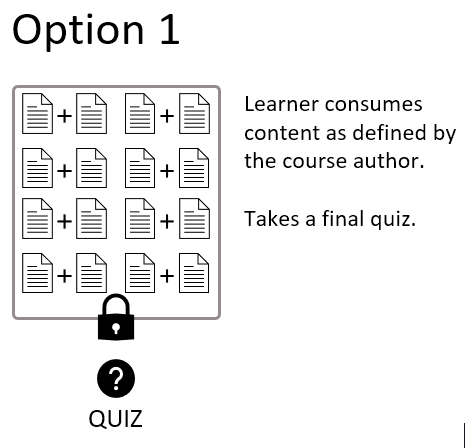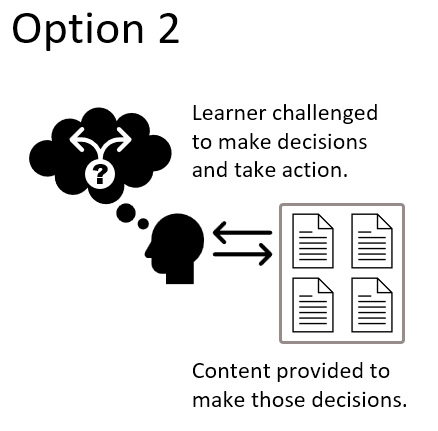Open the Learning Experience by Unlocking Your E‑Learning Course
Locking the course doesn’t guarantee a successful learning experience. It’s best to focus on the course objectives and the activities that support it.

Finding the real course objective
“Step away from the solution.”
I say this all the time when building courses. It helps me and my clients focus on the training program’s core objective. The course we’re building exists to help meet the performance objective; but the course itself is not the objective.
This takes us back to what we discussed earlier: the problem of locking the course navigation. Usually the rationale is that all of the content needs to be viewed. Or, learners will skip past everything to get in and out of the course as fast as they can. Or how do we know they are learning?
The course exists for a purpose and the objective of the course isn’t the course itself. The course is a means to get to the objective. When framed from that perspective, the concern shouldn’t be “how do I guarantee that they don’t skip anything?” Instead, it should be “how do I know that they learned what they need to learn?”
Helping your client assess results
The challenge is to get your client to see this. In the past, I’ve used the following illustration to help clients and subject matter experts see this.
Suppose you have a course where the learner gets a list and needs to buy some items. That’s the performance expectation. And think of your course content like the supermarket. The shelves are filled with all sorts of items.
While there are lots of goodies on the shelves, walking up and down the aisle and looking at everything is irrelevant to their learning expectations.
The learners, armed with the list and instructions, do their shopping. You’re not assessing them on how they shopped – you’re assessing them on whether they bought the right products on the list.
Now some people know how the supermarket is laid out, can find their items, and check out in record time. They’re pros!
Some people like me, need to orient to what’s there. They need to go up and down the aisles. They need to compare products. They want more context. It doesn’t matter if they take 10 minutes or an hour to do it. The performance expectation is to complete the shopping list. That’s what you assess. How well they did shows their level of understanding. Looking at the items in the store or spending a specified amount of time is mostly irrelevant.
Two ways to organize e-learning
Going back to e-elearning…
Option 1
The learner’s understanding is more important than whether they are looking at a screen or not. You don’t need to make learners sit through information they already know. Instead create a way to assess the learner’s level of understanding. If they don’t know the material, you would know that through the assessment and can direct them in the course to learn what they need.

Option 2
Ultimately, you establish performance expectations and in the course set a way to assess the learner’s level of understanding. If they can prove they understand, then wasting time in the course is moot. If they can’t, then they go through the content until they can.

This way, you don’t have to worry about course navigation or whether a person is skipping the content or not. You can test if they skipped it by testing their understanding. That’s a better measure of success and a better learning experience.
You may also like

Translation vs. Localization: What’s the Difference?
Compare the difference between translation vs. localization and find out how to choose the best approach for your global workforce training needs.

